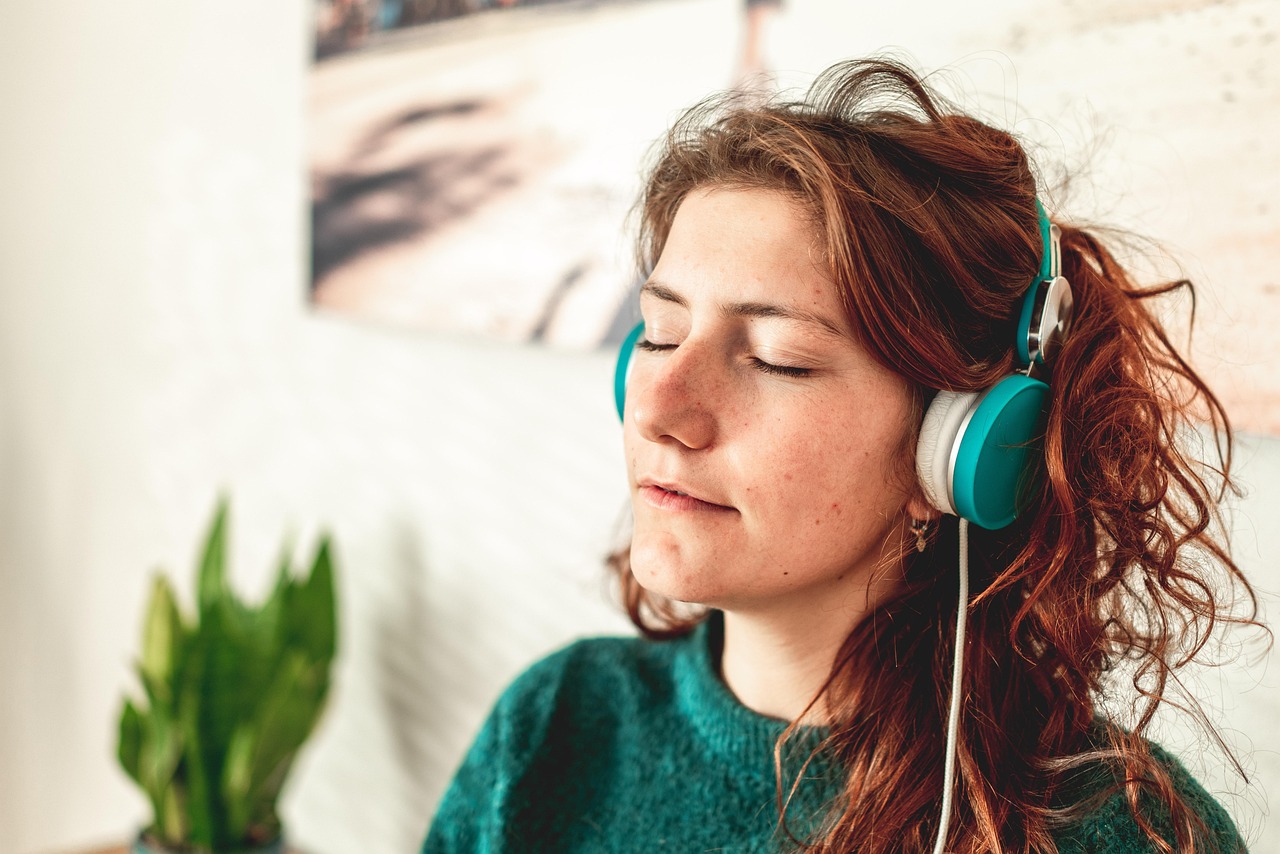Why Reducing Chronic Stress Matters (With Scientific Basis)
Stress is a normal response to challenges, but when stress becomes frequent or ongoing – chronic stress – it can harm your body and mind. Over time, chronic stress contributes to a broad spectrum of negative health outcomes.
Physical & Mental Consequences of Chronic Stress
- Persistent stress activates the hypothalamic-pituitary-adrenal (HPA) axis and releases stress hormones like cortisol and adrenaline. (Harvard Health)
- Chronically elevated cortisol is linked to high blood pressure, cardiovascular disease, metabolic syndrome, weight gain, insulin resistance, and impaired immune function. (www.heart.org)
- Stress can alter brain structure and function – especially in the hippocampus, prefrontal cortex, and amygdala – leading to poor memory, increased anxiety, and difficulty regulating emotions. (PMC)
- On the psychological side, chronic stress is strongly associated with depression, generalized anxiety, burnout, insomnia, irritability, reduced concentration, and worse overall quality of life. (Mayo Clinic)
- Behaviorally, stress can lead to overuse of substances (alcohol, tobacco), poor eating habits, disrupted sleep, social withdrawal, which further exacerbate health problems. (same Mayo Clinic)
- The concept of allostatic load describes how repeated stress “wears and tears” on multiple body systems, contributing to chronic disease risk over time. (Wikipedia)
In short: chronic stress is not just “feeling bad” – it has real, measurable negative effects on physical and mental health. This is why integrating manageable, evidence-based stress reduction habits into daily life is not optional – it’s vital.
Disclaimer / Caution:
This article offers general guidance, not personalized medical advice. If you have a diagnosed mental health disorder (e.g., major depression, PTSD, anxiety disorder) or serious physical illness (e.g., heart disease, autoimmune condition), consult qualified health professionals before making major changes. Some techniques (e.g,. relaxation, breathing) may temporarily evoke emotional discomfort in some individuals.
12 Science-Backed Habits to Reduce Stress in Daily Life
For each habit below, I include one or more studies or expert reviews as evidence, plus practical “how to start” guidance and cautions.
1. Laugh Often
Evidence & Mechanism:
- Laughter (especially “mirthful laughter”) has been shown to reduce levels of stress hormones such as cortisol, epinephrine, and growth hormone, while increasing endorphins, immune cell activity, and natural killer (NK) cell function.
- A recent review, “Laughter in Medicine,” highlights that laughter decreases stress hormones and increases antibodies and immune cells, thereby enhancing disease resistance.
- The Mayo Clinic explains that laughter “activates and relieves your stress response” – a hearty laugh raises heart rate and blood pressure briefly, then leads to muscle relaxation and a drop in stress markers.
- Another source notes that even a single laughter session may reduce cortisol by about 37%, and that laughter improves circulation, lowers blood pressure, and helps relieve physical tension lasting up to 45 minutes.
- More broadly, laughter is also tied to enhanced mood, social bonding, and resilience against stress via the psycho-neuro-immunology pathway.
How to do it (practical steps):
- Schedule something fun daily: set aside a short window (5–15 min) to watch a comedy clip, funny video, or read humorous content. And I know how this sounds: to schedule time to laugh. But I did this – years ago. I would find comedy shows and watch them in the evening.
- Cultivate humor triggers: keep a joke book, funny memes, cartoons, or comedic podcasts handy. I bought joke books. I found sites with them – and so on!
- Engage socially: spend time with friends or family who laugh easily together. Sharing jokes or recalling funny memories is a quick route to laughter.
- Try laughter exercises: laughter yoga or playful “fake laughter” (the body often responds with real laughter) can work if genuine laughter doesn’t come easily.
Combine with other techniques: after laughing, transition into a deep breathing or relaxation exercise to amplify the calming effect.
Cautions / Tips:
If you have respiratory, cardiovascular, or abdominal issues, be cautious with vigorous laughter – start gently and notice bodily limits.
Some people may feel self-conscious doing laughter exercises – start privately until comfortable.
Don’t force humor when in deep emotional distress – laughter may feel hollow or even triggering. In those times, use gentler strategies first.
Laughter is a mood enhancer and stress buffer, but it’s not a cure-all for serious mental health issues – —seek support if stress, anxiety, or depression persist.
2. Do Regular Physical Activity / Exercise
Evidence & Mechanism:
Exercise is among the most robust interventions for stress reduction. It lowers circulating stress hormones (like adrenaline, cortisol), and boosts endorphins and other mood-enhancing neurochemicals. (PMC) The same recent review emphasized that regular physical activity improves mental well-being, reduces symptoms of anxiety and depression, and increases resilience to stress.
How to start (simple):
- Aim for ~20–30 minutes of moderate-intensity exercise (e.g., brisk walking, jogging, cycling, dancing) most days of the week.
- If you’re new to exercise, start with 10-minute segments and gradually increase.
- Incorporate movement breaks during sedentary periods (e.g. 5-minute walk breaks).
Cautions / Tips:
Choose types you enjoy – consistency is easier if it’s fun.
If you have cardiovascular or joint issues, consult a physician before starting.
Avoid overtraining – too much exercise can itself become a physiological stressor.
3. Practice Mindfulness / Meditation
Evidence & Mechanism:
Mindfulness-based interventions (MBIs) such as Mindfulness-Based Stress Reduction (MBSR) are well supported by research. A meta-analysis and systematic reviews show reductions in stress, anxiety, and cortisol levels.
For instance, MBSR has been found to modify brain connectivity in areas linked to emotional regulation, improving stress resilience. (PMC)
Another large recent study showed that self-administered mindfulness significantly reduced short-term stress vs controls. (Nature)
I recently published a comprehensive article about meditation and how it can help you to live longer.
How to start (simple):
- Use a guided meditation app for 5 minutes daily.
- Sit or lie comfortably, direct attention to breath or bodily sensations, notice thoughts and let them go without judgment.âGradually increase to 10–20 minutes if comfortable.
Cautions / Tips:
Some people experience emotional discomfort (e.g., confronting painful thoughts) during meditation. If so, consider guidance from a mental health professional.
Don’t expect immediate calm – regular practice matters.
Combine with other strategies (e.g., breathing, movement) for a better effect.
4. Keep a Gratitude Journal / Practice Gratitude
Evidence & Mechanism:
Gratitude interventions are linked to lower perceived stress and lower cortisol reactivity. (University of Utah Healthcare)
Another review notes that gratitude practices activate neural reward circuits and shift outlook toward positivity.
How to start (simple):
- At the end of each day, write down 3 things you are grateful for (big or small).
- Optionally, expand one of them: Why are you grateful? What made it possible?
- Do this for at least 2–4 weeks to see notable effects.
Cautions / Tips:
Don’t force gratitude – if nothing jumps out, you can recall neutral positives (e.g., “I had a safe journey”).
Avoid comparisons – don’t let the practice trigger envy or guilt.
Use alongside other strategies; by itself, it helps mood but may not fully counter deeper stress.
5. Listen to Music
Evidence & Mechanism:
- A systematic review of music therapy and listening interventions concluded that music is strongly associated with stress reduction, through decreases in physiological arousal (e.g. lowered cortisol, reduced heart rate) and improved emotional states.
- In one surgical context, patients who listened to music experienced significantly lower cortisol levels compared to controls, indicating that music can buffer stress responses even in high-stress settings.
How to do it (practical steps):
- Curate a relaxation playlist: choose music that you find calming – classical, acoustic, ambient, nature-inspired sounds, or any genre you trust to soothe rather than energize.
- Use music intentionally: listen during or immediately after a known stressor (e.g. commute, after a meeting) rather than passively in the background.
- Duration & frequency: 10–20 minutes is a good starting point; you can repeat shorter sessions (5–10 min) several times a day.
- Mindful listening: focus attention on the music – pay attention to instruments, melody, rhythm, dynamics – rather than treating it as mere background noise.
- Adaptive selection: notice what kinds of pieces make you more relaxed vs. agitated, and refine your playlist over time.
Cautions / Tips:
Because not all music is equally relaxing, avoid tracks that trigger negative memories, high tension, or too much stimulation.
If you’re listening while doing other tasks (driving, working), avoid overly immersive music that distracts from safety or performance.
Some studies show mixed findings (i.e., music doesn’t always reduce cortisol in every context) – effects appear context- and person-dependent. (PLOS)
For people with hearing loss or tinnitus, adjust volume and selection accordingly to avoid strain.
Use music as one tool among many – don’t rely solely on music if stress is high or chronic.
6. Spend Time in Nature / Green Spaces
Evidence & Mechanism:
Recently, I dedicated an entire article to walking outdoors and awe walks and their health benefits.
In short, exposure to green spaces parks, forests, gardens) is associated with reduced stress, lower cortisol, better mood, and mental well-being.
How to start (simple):
- Take walks in a local park or garden (10–20 minutes).
- Eat lunch outdoors when possible.
- Keep a houseplant or look out a window onto natural scenery.
Cautions / Tips:
Even small doses (a few minutes) can help – you don’t need a perfect nature.
If mobility or safety is a concern, use virtual nature (photos, sounds) as a mild substitute.
In extreme weather or air pollution, limit exposure.
7. Social Connection & Support
Evidence & Mechanism:
Humans are social creatures; strong social relationships buffer against stress and improve resilience.
Social support is one of the strongest protective factors in stress research – people with better support report lower physiological and psychological stress.
How to start (simple):
- Reach out to one friend or family member today – call, text, or meet in person.
- Join a local group (hobby, volunteer, book club).
- Share how you feel; expressing emotions helps lighten the load.
Cautions / Tips:
Boundaries matter – if relationships are toxic, reduce exposure.
Some introverts may find social energy draining – balance connection with rest time.
If social anxiety is strong, start small (e.g., online groups, one-on-one connection).
8. Limit Overexposure to Negative News / Social Media
Evidence & Mechanism:
We all know and read that constant exposure to negative news, doomscrolling, or social comparison via social media increases anxiety, rumination, and stress.
One psychological model, “perseverative cognition,” posits that repetitive thinking (worry, rumination) prolongs physiological stress responses and is linked to disease. (Wikipedia)
How to start (simple):
- Set a fixed “news check” time (e.g., 15 min in the morning).
- Use app timers or screen-time limits.
- Unfollow overly negative accounts or mute stress-inducing content.
- Replace media time with calming habits (breathing, reading, nature).
I did this years ago and I can tell you that the effects are visible. I am aware of the things happening in my country and internationally – I am not disconnected from the news, but I do not linger on the negative ones. And the negative news or events do not become the focus of the conversations I have with my family or friends
Cautions / Tips:
Don’t go to extremes (complete disconnection) if staying informed is needed for your job.
Be gentle – reduce exposure gradually.
Balance staying aware vs mental overload.
9. Prioritize Sleep & Good Sleep Hygiene
This is another thing I prioritize and can tell you that it is effective.
Evidence & Mechanism:
I read numerous studies showing that poor sleep exacerbates stress responses, increases cortisol, impairs emotional regulation, and weakens immune function.
Conversely, improving sleep quality helps reduce stress perception and improves cognitive and emotional resilience.
How to start (simple):
- Aim for 7–9 hours of consistent sleep (go to bed / wake at the same time).
- Create a calming pre-sleep routine (dim lights, no screens 30–60 min before bed).
- Keep the bedroom cool, dark, and quiet.
- Avoid caffeine or heavy meals late in the evening.
If you want, read this article about the night routine that boosts longevity.
Cautions / Tips:
If insomnia or sleep disorders persist, seek medical evaluation.
Avoid using sleep meds habitually without supervision.
Daytime naps: short (≤ 30 min) to avoid interfering with nighttime sleep.
10. Practice Small “Micro Breaks” / Scheduled Pauses
Evidence & Mechanism:
Short breaks during work or study provide a mental reset, reduce cognitive fatigue, and dampen stress escalation. Some task-based neuroscience studies show micro breaks help maintain performance and lower stress hormones.
While not always studied in isolation, many stress-management programs embed micro breaks (breathing, stretching, walking) and find improved outcomes.
How to start (simple):
- Every 50–60 minutes, take a 2-3 minute pause: stretch, breathe, step outside, do nothing.
- Use timers or apps to prompt breaks.
- During breaks, avoid work thoughts – just breathe or look out the window.
Cautions / Tips:
Resist the urge to check email or social media during the break (that defeats the point).
If your environment doesn’t allow physical movement, take mental micro breaks (e.g. closing eyes, breathing).
Consistency over duration – frequent small breaks beat occasional long ones.
11. Learn to Say “No” / Limit Overcommitment & Set Boundaries
Evidence & Mechanism:
Overcommitment and inability to decline nonessential demands are a known source of chronic stress and burnout – I think we can all agree and we all read articles on this topic.
Psychological stress models and occupational health studies associate high role overload with increased psychological distress and health complaints.
How to start (simple):
- For the next week, commit to declining at least one obligation that is not essential.
- Practice a short script: “Thank you for asking, but I have to decline.”
- Reassess your to-do list – eliminate or delegate tasks that don’t align with priorities.
- Use boundary signals (e.g. “I’m unavailable after 7 pm”) and protect them.
Cautions / Tips:
Saying “no” can feel uncomfortable initially – start small.
Maintain politeness and clarity – don’t overexplain.
Boundaries are healthier than resentment over doing too much.
Other ideas
There are a few more things you can do to lower your stress levels:
- Limit Caffeine and Alcohol Intake – High caffeine and alcohol consumption exacerbate anxiety and disturb sleep, increasing stress vulnerability
- Engage in Creative Hobbies – Activities like drawing or playing music reduce cortisol and enhance positive emotions. Start by thinking about what you liked doing when you were a child – or what relaxes you now.
- Stay Hydrated – Dehydration can worsen stress symptoms like headaches and fatigue. A study suggests drinking enough water supports cognitive function under pressure
Conclusion & Implementation Suggestions
Putting It All Together:
You don’t need to adopt all these habits overnight. Here’s a suggested plan:
- Choose 2–3 habits from the list to start.
- Commit to a 30-day trial (e.g., meditation, gratitude, walking in nature).
- Track your stress, mood, sleep, and energy (journal or use an app).
After 30 days, reflect: What helped? What didn’t? Add another habit.
Build gradually – not overwhelm.
Overall Caution / Final Disclaimer:
These strategies are generally low-risk and accessible, but they are not a substitute for professional treatment. If you experience persistent high anxiety, panic attacks, major depression, or health issues, please consult a qualified psychologist, psychiatrist, or medical doctor. Start gently, listen to your body, and customize approaches to your specific needs.








